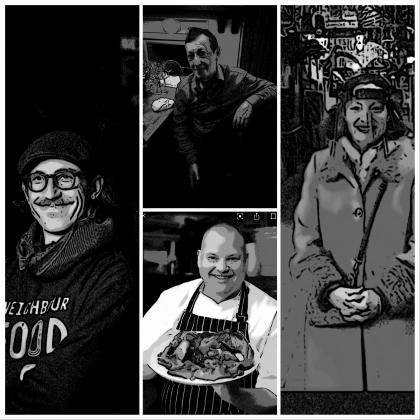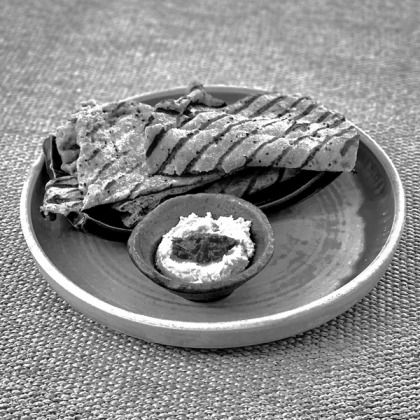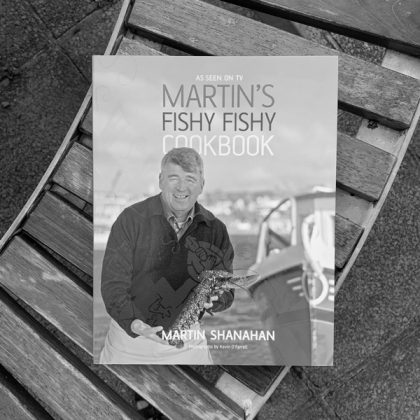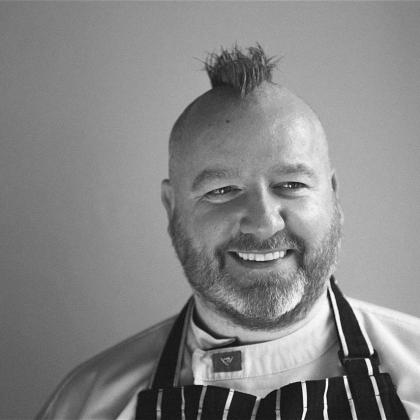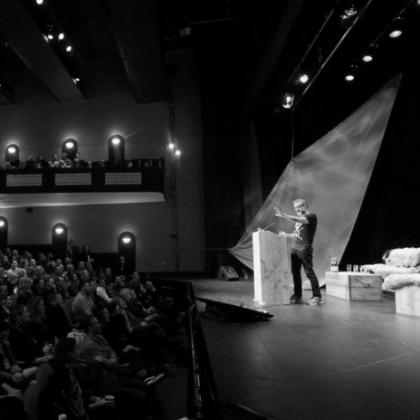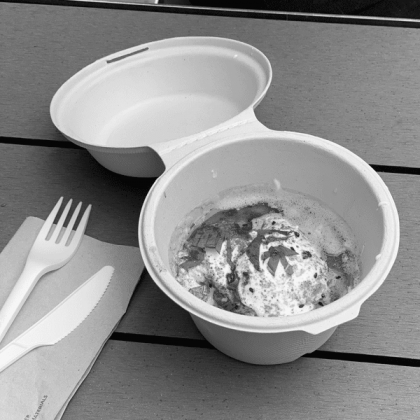Larder by Robin Gill (Absolute Press)
Reading through the opening chapters of Larder, you get a sense of the body of work that it has taken to put this project together. You can almost see all those handwritten recipes and notes, taken down over years of travelling, working and exploring. The result is more than fifty pages of tightly packed recipes, three or four to a page, covering anything and everything from crab oil to apricot and lemon thyme jam, from artichoke piccalilli to fennel salami. This is a generous and life-lasting selection of recipes, a wealth of knowledge and learning.
The second half of Robin Gill's book features longer recipes, often referring back to the beginning chapters, where the larder of information is collected. The chapters follow the format of his first menu, when opening the Dairy in Clapham: Snacks, Garden, Sea, Land, Sweet.
Writing about his worklife in Le Manoir ‘the equivalent of gaining a scholarship at Oxford’ and Don Alfonso on the Amalfi Coast ‘this made the biggest impression on how I cook today. I learned how to hold back and let the produce speak for itself’, Robin Gill describes the influences that have shaped him as a cook. This, almost biblical selection of many many recipes is a response to the influences that created his culinary canon, and the book will, in turn make a big impression, and offer huge education to many chefs and cooks who read it.
Brian McDermott’s Donegal Table (O’Brien)
Domestic dishes, finessed by a prodigious and diligent professional talent. That’s Brian McDermott’s secret, and he lets you into the secret with this fine book. McDermott is driven by the 'desire to create food which would give others the same sense of belonging I felt at my mother’s kitchen table.' That’s a powerful and all-encompassing ambition, and it’s an ambition that creates McDermott’s modesty and his utility as a teacher and author: he knows the magic of being at the table and the wellness it brings, and he wants everyone to experience it, and be consoled and comforted by it. This is simple food, but it is all-powerful at the same time.
Ottolenghi Simple (Ebury Press)
It’s funny how Ottolenghi has become a noun in cooking. As in, ‘That’s a real Ottolenghi’, or ‘I feel like an Ottolenghi for dinner'. And – better again – now you can produce a ‘real Ottolenghi’ with minimum effort and ingredients, thanks to Ottolenghi Simple. We’ve been waiting for this book.
Take a handful of this, sprinkle a bit of that, stir and voila! Magic happens.
And, while we might be able to corral a cluster of ingredients into something tasty in Ireland, it takes being born in a different part of the globe to understand how to do this the Ottolenghi way without proper instruction.
So, take your sprouts. How about crushing some caraway seeds with black garlic and thyme. Add some brown butter and voila! a perfect partnership for roast sprouts. Or, make sumac onions by simply massaging shaved shallots with sumac, vinegar and salt. Easy. Or, make ‘tabbouleh’ with raw cauliflower instead of wheat. Or… we could go on. Every page is as exciting and tempting as the page before and the page after. Genius.
How To Eat A Peach by Diana Henry (Mitchell Beazley)
Because food writing is categorised separately from creative writing, great food writers are rarely recognised for what they are: great writers. And, amongst modern food writers, Diana Henry is one of the great writers: 'Spain is full of brightness – the sun, its flag, flamenco dresses – but also darkness. El Greco wasn’t born in Spain, but he is a painter of Spain.'
Wow! Summarise Spain in 2 sentences, starting now. You have to be a great writer to do that.
Ms Henry is also a great cook. She is voracious and inquisitive, and never forgets a meal, a taste, a morsel, a sip. How to Eat a Peach is her most personal book since her stunning debut, Crazy Water, Pickled Lemons, and the book is all the better for letting us into her thoughts and reminiscences. We have come to expect masterpieces from this singular writer, and How to eat a Peach is just that.
The Currabinny Cookbook by James Kavanagh and William Murray (Penguin Ireland)
‘Don’t throw away the stalks! You can use them to make stock (they’ll keep in the freezer).'
‘No table setting is complete without flowers.’
‘Lacing your frangipane filling with a good slosh of kirsch brings out the subtle flavours of the pears.’
‘Butter makes everything taste better.’
‘Currabinny is … a quiet and picturesque place, dominated by trees, rocks and water.'
These are the words of – funky, young, metropolitan media personalities and social influencers James Kavanagh and William Murray, whose The Currabinny Cookbook was published by Penguin Ireland this year. And how wonderful to read all these wise and mature instructions and find a set of recipes that celebrates ingredients, Cork Harbour culture, farmers’ markets and family.
In a time when faddy foods, and misguided philosophies about what we eat dominate the social media output, it’s a blast to come across this sweet book of delicious home cooking. The Ballymaloe School has a huge influence of course, where William trained. And the lad’s mothers also feature with fine recipe for Potato Gratin (Gags’s) and Fish Pie (Breda’s).
If this is social influencing, then the world is in a happier place than we thought.


